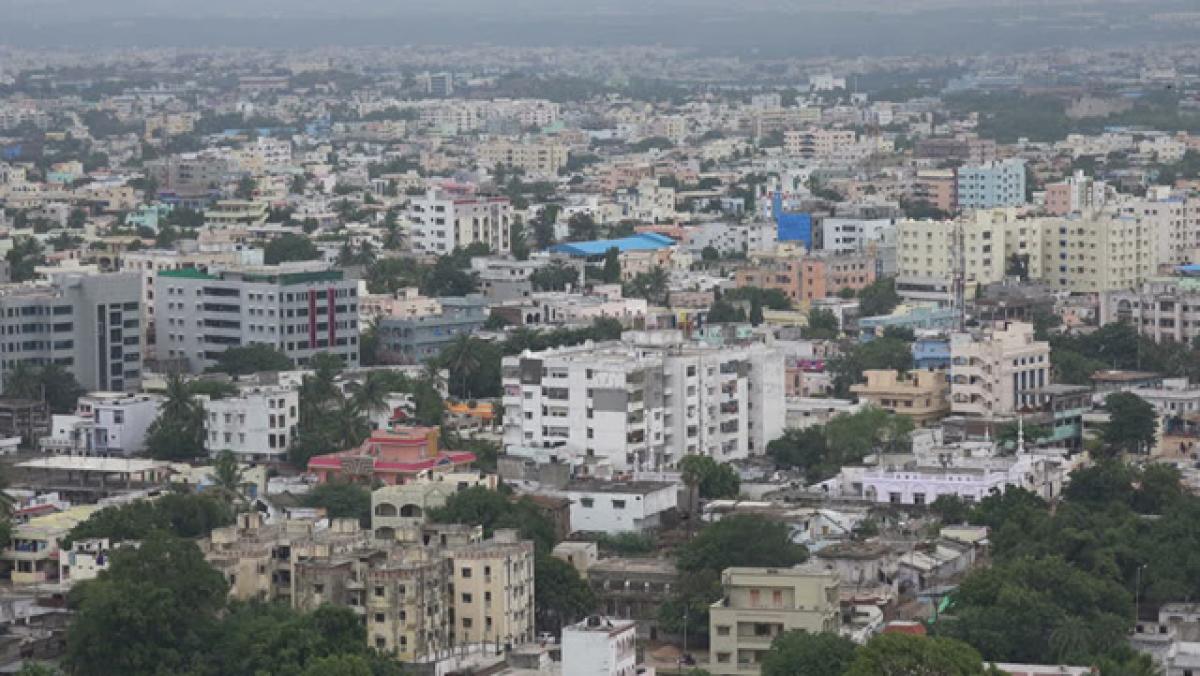Live
- NASA Tracks Five Giant Asteroids on Close Approach to Earth Today
- Pushpa 2 Hits ₹1000 Crore in 6 Days: How It Compares to Other Top Indian Films
- Vivo X200 and X200 Pro Launched in India: Price, Specifications, and Features
- Nitin Gadkari Admits Feeling Embarrassed at Global Summits Over Rising Road Accidents in India
- Comprehensive Review on Indiramma Housing Survey and Welfare Initiatives Conducted via Video Conference
- Jogulamba Temple Records Rs 1.06 Crore Hundi Revenue in 150 Days
- Opposition Slams ‘One Nation, One Election’ Bill as Anti-Democratic; BJP Allies Support the Move
- Celebrate Karthigai Maha Deepam Virtually with Sri Mandir’s LIVE Darshan Experience
- BJP Extends Support to Samagra Shiksha Abhiyan Employees' Strike, Demands Immediate Regularization and Welfare Benefits
- Dr. M. Priyanka Stresses Quality Education, Nutritious Meals, and Cleanliness in Schools
Just In

The monsoon has currently dissipated intense heat across India’s growing cities, but temperatures are rising and will continue to climb because of the way urban areas are expanding.
The monsoon has currently dissipated intense heat across India’s growing cities, but temperatures are rising and will continue to climb because of the way urban areas are expanding. With trees, lakes and open spaces replaced by roads, expanses of concrete with closely spaced multi-storeyed buildings often in violation of zoning and setback laws Indian cities are turning into “heat islands”, according to an IndiaSpend review of scientific studies in five cities.
A clear trend is evident: The difference between the daytime maximum and nighttime minimum daily temperatures the diurnal temperature range (DTR) is steadily declining. This indicates that concretising cores of cities are retaining heat, even as temperatures rise in formerly cooler outskirts, as they, too, urbanise. A higher range of temperature indicates greater cooling:
In Delhi, over a decade to 2011, the temperature range declined by more than 2 deg C, one of India’s strongest heat-island effects. In Chennai, the morning temperature at the city centre is between 3 to 4.5 deg C higher than its greener fringes. In Thiruvananthapuram, when a cool, evening breeze blows, the greener rural areas cool by 3.4 deg C, the city areas by half as much. In Guwahati, city areas are warmer by 2.13 deg C than the peripheries during the day and by 2.29 deg C at night.
In Kochi, a canyon-like effect of buildings funnels heat into the city, creating a “heat island” that makes the centre 4.6 deg C warmer in winter and 3.7 deg C in winter. Heat islands are created by a combination of design, construction material and environment. Closely built buildings form canyons that trap heat reflecting from their walls. Air-conditioning vents, especially in narrow alleys, further warm up buildings and nearby areas.
Trees, shrubs, grass and soil absorb heat and cool the land, but since these are increasingly absent in Indian urban design, and what existed is being cleared, what’s left is concrete and asphalt, which soak in and intensify the day’s heat, staying hot for many hours at night. Things are set to worsen, as IndiaSpend reported in March 2016. Kolkata’s tree cover fell from 23.4 per cent to 7.3 percent over 20 years, as the built-up area rose 190 per cent. By 2030, vegetation will be 3.37 per cent of Kolkata’s area.
Ahmedabad’s tree cover fell from 46 per cent to 24 per cent over 20 years; the built-up area rose 132 per cent. By 2030, vegetation will be three per cent of Ahmedabad’s area. Bhopal’s tree cover fell from 66 per cent to 22 per cent over 22 years. By 2018, it will be 11 per cent of the city’s area. Hyderabad’s tree cover fell from 2.71 per cent to 1.66 per cent over 20 years. By 2024, it will be 1.84 per cent of the city’s area.
On an instinctive, tactile level, you can feel the effects of heat islands in cities dissipate and the temperature drop when you pass a rare, green expanse, such as Delhi’s Lodhi Gardens or Jawaharlal Nehru University and Bengaluru’s Indian Institute of Science.
Here are the details of what’s happening in five cities:
Delhi: Intense heat island; Population: 11 million. Area: 1,484 sq km. As Delhi’s metropolitan population grew 20 per cent between 2001 and 2011, the difference between its maximum and minimum temperatures flattened out, a 2015 paper reported. Wider temperature variations - meaning cooler areas - were evident in urban villages and open areas. Northwest and Southwest Delhi, areas of intense growth, registered the largest fall in temperature variation - between 2.5 to 4 deg C.
Chennai: Star of fire becomes warmer; Population: 4.68 million; Area: 426 sq km. During the hottest period of the year in late May - called agni natchatiram (star of fire) - the temperature in the commercial complexes and densely populated residential expanses of central and north Chennai registered the most variations; the outskirts were cooler, a 2016 paper said. Compared with observations in 1991 and 2008, heat islands have grown more intense, with a 1.5 to 2 deg C variation with the peripheries in 1991 growing to 2.53 deg C by 2008. Wherever there was vegetation, a cooling effect was evident.
Variations of these trends were manifest in other cities, and it was evident that traditional building material cooled homes better. In Vellore, Tamil Nadu, roofs of thatch had the best cooling effect, a 2015 paper reported. (In arrangement with Indiaspend.org)
By Max Martin

© 2024 Hyderabad Media House Limited/The Hans India. All rights reserved. Powered by hocalwire.com







